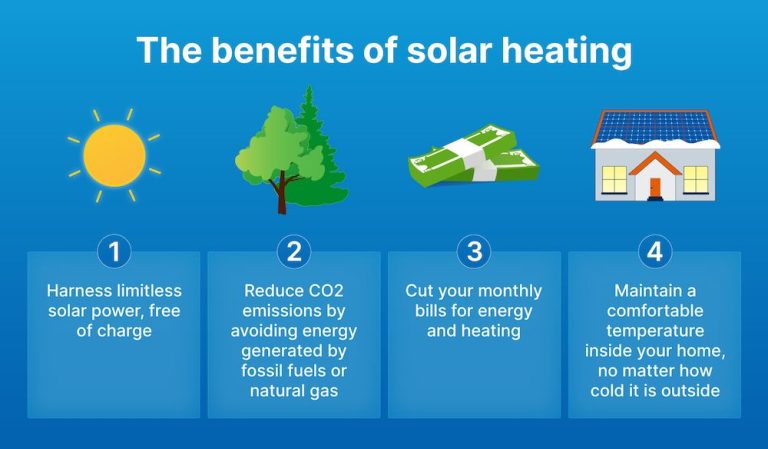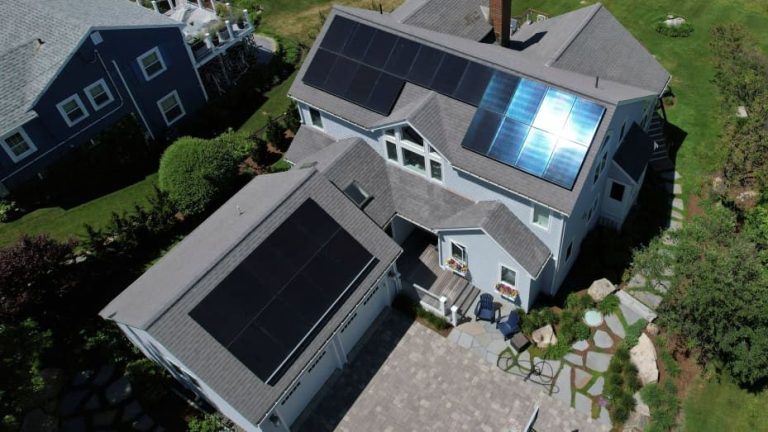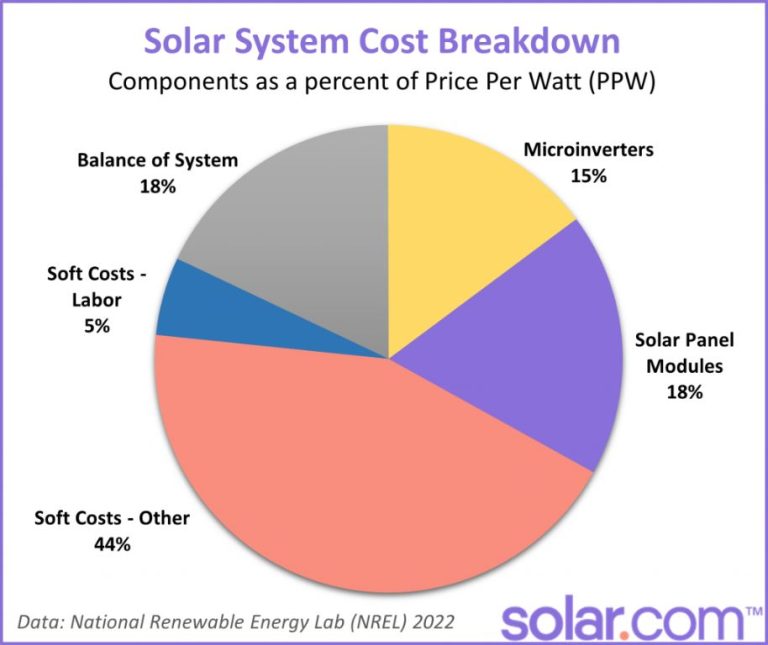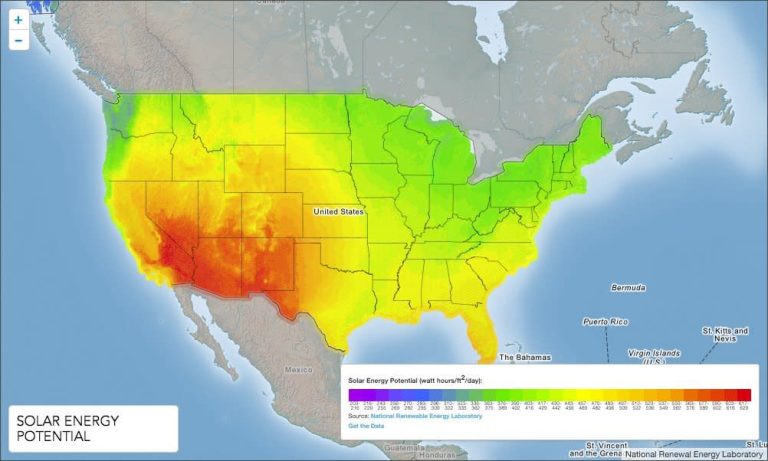Do Solar Panels Leak Toxins?
With climate change being one of the most pressing issues facing society today, many homeowners are looking to solar panels as a way to reduce their carbon footprint. Solar power has experienced rapid growth in recent years, with over 4 million homes in the U.S. now powered by solar energy (1). But along with the benefits, some have raised concerns about potential toxins that could be released from solar panels.
This article provides a comprehensive look at the materials used to manufacture solar panels, and whether they actually pose any risk of leaking hazardous substances. With the rising popularity of residential solar, it’s important to have the facts to make an informed decision about installing panels on your home. We’ll analyze if solar panels can leak toxins during normal operation or when damaged, and how they compare to other energy sources in terms of environmental and health impacts. Understanding the real risks, if any, is key to evaluating the pros and cons of going solar.
(1) https://www.seia.org/solar-industry-research-data
How Solar Panels Work
Solar panels work by converting sunlight into electricity through the photovoltaic effect. Solar cells within the panels contain materials like silicon that absorb photons from sunlight and release electrons. The released electrons create an electric current that flows through wires to be used as electricity (Source: https://www.energy.gov/eere/solar/how-does-solar-work).
The main components of a solar panel include the photovoltaic cells, a transparent cover to allow light in, a backing plate, and a frame around the edges. The cells are wired together and electrical connections added to transport the generated current. Many individual solar cells are connected together to form a solar photovoltaic module or panel. The panels can be mounted on rooftops, ground-based structures, or other surfaces where they can capture sunlight (Source: https://www.nationalgrid.com/stories/energy-explained/how-does-solar-power-work).
Common Solar Panel Materials
Most solar panels are made primarily from silicon (https://blog.ucsusa.org/charlie-hoffs/how-are-solar-panels-made/). By weight, a typical crystalline silicon solar panel is comprised of about 76% glass, 10% plastic polymer, 8% aluminum, 5% silicon, and 1% copper (https://www.energy.gov/eere/solar/solar-photovoltaic-cell-basics).
Silicon is the semiconductor material that makes up the PV cell, which is the technology that converts sunlight into electricity. The silicon atoms are specially treated to form an electric field that causes electrons to flow and generate electricity when exposed to sunlight (https://www.energy.gov/eere/solar/solar-photovoltaic-cell-basics).
Glass forms a protective outer layer and provides support for the more delicate silicon cells. Aluminum frames provide additional structural support and allow for easy installation. Copper wiring conducts the electricity generated by the PV cells out of the panel.
Potential Toxins in Manufacturing
The manufacturing process of solar panels does involve some concerning toxic chemicals. One of the most notorious is cadmium, a known carcinogen and toxic heavy metal. Cadmium telluride solar panels use cadmium as a semiconductor material. Exposure to cadmium, even in small amounts, is known to damage kidneys, bones, and lungs over time. Strict safety precautions are required when handling cadmium in the production process. However, cadmium toxicity is only a risk to workers directly handling the material, not to consumers using the final solar panel product which encapsulates the cadmium safely.
Lead solder may also be present in solar panels, particularly in the wiring and electronics. Lead is a neurotoxin, especially harmful to children. However, similar to cadmium, lead in solar panels is enclosed and not exposed once the panel is produced and installed. As long as proper safety precautions are followed by solar panel installers, lead does not pose a risk to consumers.
While toxic chemicals like cadmium and lead require careful handling during manufacturing, the levels present in finished solar panels are very low and encapsulated. Under normal conditions, there is no pathway for these chemicals to be released from panels in a way that could harm people or the environment.
Toxins During Normal Operation
During normal operation, solar panels do not emit any toxic substances or dangerous chemicals. The panels simply convert sunlight into electricity through the photovoltaic effect. There are no byproducts or emissions involved in this process [1].
Some people worry that rainwater running off of solar panels may carry toxic substances from the panels into the environment, but this is not the case. Solar panels are designed to withstand outdoor weather conditions and research shows runoff from solar panels does not contain concerning levels of pollutants [2]. The glass and polymer materials used in solar panels do not leach chemicals or toxins into runoff water [3].
So during normal operation, solar panels are a clean energy source with no emissions or leakage of toxic substances. The photovoltaic process itself produces only clean electricity from sunlight.
Toxins if Damaged
If solar panels become damaged, there is a potential risk of toxic materials leaching out. The most common concern is with cadmium telluride (CdTe) solar panels, which contain the heavy metal cadmium. According to the EPA, cadmium can be toxic if ingested or inhaled [1]. CdTe panels are constructed with a glass sheet that protects the cadmium, but if the glass cracks, this protective layer is compromised. Studies have shown that leaching may occur if cracks exceed 3 mm wide [2].
Fortunately, CdTe panels are designed to be durable and resistant to damage. Manufacturers claim they can withstand impact from hailstones traveling at terminal velocity. Furthermore, cadmium makes up less than 1% of the total panel mass. But if damage does occur, it’s recommended to have professionals assess and safely dispose of panels to avoid potential cadmium exposure.
Recycling and Disposal
Proper recycling of solar panels reclaims valuable materials and prevents them from ending up in landfills. Most solar panels contain materials like silicon, glass, aluminum, and copper that can be recovered and reused (https://www.greentechrenewables.com/article/can-solar-panels-be-recycled). For example, silicon from solar cells can be purified and manufactured into new solar panels or electronics. Metals like copper and aluminum can be smelted and formed into new products.
Solar panel recycling in the US involves dismantling the panels, removing components like the frame and junction box, then crushing and shredding the remaining materials. The resulting scrap is sorted so the glass, silicon, and metals can be separated and recycled (https://www.epa.gov/hw/solar-panel-recycling). Proper recycling allows up to 90% of a solar panel’s materials to be reused.
![]()
Recycling solar panels keeps toxic materials out of landfills and prevents pollution. Old solar panels disposed of improperly could leach lead or other hazardous compounds over time. Responsible recycling minimizes waste and environmental impact.
Regulations and Testing
Solar panels must meet strict regulations and testing standards for safe manufacturing in the United States. All manufacturers must comply with regulations set by organizations like the Environmental Protection Agency (EPA) and Occupational Safety and Health Administration (OSHA) to limit worker exposure and prevent any toxic materials from leaking out into the environment.
The EPA has established standards for how much cadmium and other heavy metals solar panels are allowed to contain under the Resource Conservation and Recovery Act (RCRA). The threshold for cadmium is 50ppm before panels are considered hazardous waste. Newer thin film panels utilizing cadmium often fall under this limit. The EPA also requires solar manufacturers to submit data on chemical compositions and passes regular federal inspections of facilities.
Comparisons to Other Energy Sources
While solar panels have some potential environmental impacts, they compare favorably to other energy sources when looking at total emissions and environmental damage. Fossil fuels like coal and natural gas emit substantial amounts of carbon dioxide and other greenhouse gases during power generation. According to an analysis by Carbon Brief, solar PV emits 41 grams of CO2 equivalent per kilowatt-hour (kWh) generated over the lifetime of a solar panel, including manufacturing, installation, and operations. This is far below the emission rates for fossil fuel power plants, which range from 469-1,001 gCO2/kWh for natural gas and 762-1,281 gCO2/kWh for coal (Carbon Brief).
Even other low-carbon energy sources like nuclear and hydropower have higher lifecycle emissions than solar PV. Solar also requires far less land and water than most other energy sources. While no energy technology is completely emissions-free, analyses show solar PV has one of the smallest carbon footprints per unit of electricity produced (EIA). This makes it an attractive option to help reduce greenhouse gas emissions and mitigate climate change risks.
Conclusions
Based on the evidence, solar panels do not leak any significant amount of toxins during normal operation and pose minimal risk to the environment and human health compared to other energy sources. While solar panel production involves some hazardous materials like lead and cadmium, regulations require proper handling and disposal. Panels are thoroughly tested for safety and do not release toxins when intact. Any potential leakage from damaged panels is extremely minimal. When panels reach end-of-life after 25-30 years, most materials can be recycled or disposed of properly as electronic waste. Overall, solar power provides clean energy without ongoing air pollution or greenhouse gas emissions. Any environmental risks from solar panels are vastly outweighed by the benefits.





